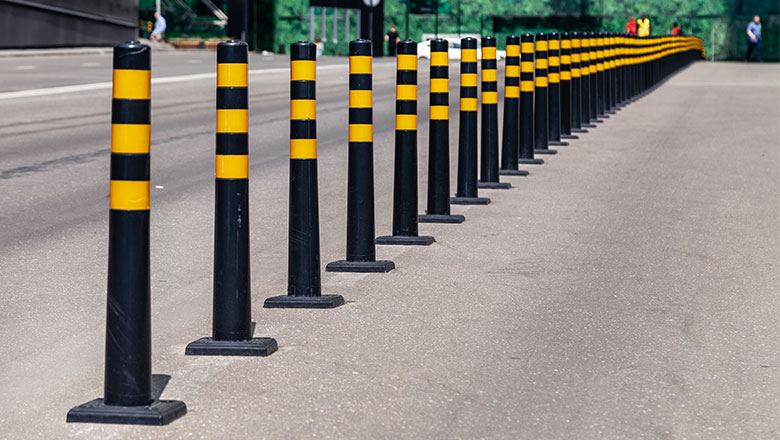This second layer of security enhances opportunity to delay access should a breach occur at the perimeter. This area (or zone) can often be where critical plant such as transformers and generators are placed (in lieu of available roof space) to generate much needed free air for exhaust and cooling. These are likely to have their own dedicated secondary enclosure with further controlled access.
Layer 2 - Clear Space and Reception Area
This second layer of security enhances opportunity to delay access should a breach occur at the perimeter. This area (or zone) can often be where critical plant such as transformers and generators are placed (in lieu of available roof space) to generate much needed free air for exhaust and cooling. These are likely to have their own dedicated secondary enclosure with further controlled access.

Just like perimeter security, a diverse range of security products and processes can be used to secure this area and may include:
Guard house
Manned by security personnel who can deter and delay intruders and operate gates and barriers to allow or deny access.
Bollards and road blockers
Can be used as restrictions and controlled (lowered or raised) to allow access, as well as more permanent structures, which might also have anti-ram features.
Car Traps
Commonly known as ‘tiger trap’ functions, these are designed for single entry only access control and allow a car to be held in place while security personnel carry out checks or searches before gaining further access.
Mobile security
This may consist of man guarding and security patrols on foot or in vehicles, providing constant feedback on potential incidents and intruders.
Cameras
As well as those placed at boundaries and along perimeters, surveillance cameras should be used that cover the whole clear space area to observe those arriving at the data centre through to making their way to the reception or other building access points.
Camera monitoring can account for any ‘tailgating’ or ‘piggybacking’ and the use of surveillance and “deep learning” analytics can also identify persons entering the facility. Automatic number-plate recognition technology (ANPR) technology can also read vehicle registration plates, which can be checked against databases in real-time to validate and admit only pre-approved vehicles.
Modern surveillance cameras, which use artificial intelligence, can also proactively monitor and alert for unusual activity in outdoor spaces (such as speed of vehicles and location of people) and also learn what a typical camera scene is over particular periods, thereby enabling it to flag untypical movement and behaviour. Some advanced cameras can also detect smoke and fire.
Video surveillance can also be integrated with other systems and especially visitor management and access control technology, enabling visitors to be tracked throughout the establishment and into further layers.
The next layer of physical security is found at the reception or building entrance, a holding zone for visitors and may also serve as an access point for employees and contractors. Visitors will be booked in and passes/access keys issued before sole or hosted access is granted to the main data centre building(s). This area provides a merged front-of-house facility with a security service, enabling a visible crosscheck against who is expected, who has arrived, and also just as importantly, who is signing out and leaving the data centre.
Video surveillance is also important here to record and monitor activity in this area. This should be accompanied with the appropriate signage and display, providing not only a welcome to the facility, but also any policies or instructions for them to follow or any health and safety warnings that need to be highlighted before entering the main facility.
Typically, a data centre would utilise a visitor management system (VMS) to protect their facilities, people and assets, as well as enhance the visitor experience. There are numerous visitor management systems available and features might include:
- Pre-visit information and registration
- Check-in and check-out facilities
- Host notifications
- Visitor screening (watchlists and blocklists)
- Risk Assessment & Method Statement Approval (RAMS)
- Statement of Work Approvals (SoW) including rights of access approvals
- Digital document signing (privacy/policies/non-disclosure agreements)
- Health (screening) and Compliance (MOP and EOPs)
- Photo capture
- Issuing and printing of passes
- Data recording and monitoring of visitor activity
- Real-time notifications and analytics
VMSs can operate standalone or be integrated with other systems such as access control systems, video management systems and Computer Aided Facility Management systems (CAFM).
Each security solution adds a new layer of protection to the data centre, many of which are integrated with other systems and networks thereby providing added protection as a subject moves through the facility.
Download our Datacentre brochure here to learn more about how G4S security services can support your business needs.
